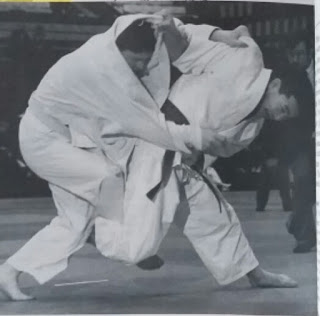Some tips for a better throw.
Hi, everyone!
I am typing this post while taking a nice break from a 2 and a half hour long gasshuku (training camp- I have only heard this term used by karate people, but maybe some students of other Japanese martial arts know it too.)
The Olympics are on our TV's and we get to see some Judo amongst other things.
I wish somebody wants to post more videos of Judo kata on Youtube and stuff, because that is much nicer to look at than the competitions. If you have not seen a Judo kata before- here is an example:
https://youtu.be/q9SfzhSDjBw?t=328
That looks pretty cool, doesn't it?
Now- most of the time we see something like this going on-
I wish somebody wants to post more videos of Judo kata on Youtube and stuff, because that is much nicer to look at than the competitions. If you have not seen a Judo kata before- here is an example:
https://youtu.be/q9SfzhSDjBw?t=328
That looks pretty cool, doesn't it?
Now- most of the time we see something like this going on-

The sequence below shows one of my favourite throws that is a good way to get someone acquainted with throwing techniques. You can see that for one thing- I am not on one leg when I am pulling my partner into the throw.


Let's go through the essential elements of a good throw:
1. Keeping your stance: It looks as if Judoka never learn the value of a good stance. A good stance alligns the body in such a way that the centre of balance is lowered. It also employs the legs to provide not only rooting, but drive as well. In Japanese martial arts the term "hara" is often heard. It mostly refers to what the Chinese call the "Dan Tien", which is generally the abdomen (many will say it's that spot beneath the navel, but to the Japanese the "hara" is the whole abdomen. Maintaining the "hara" in throwing techniques mean that the centre of gravity is lowered and kept in place so that the body is immovable. This is also why I sink into that horse stance as I set my parner up for the throw.
2. Disrupting your opponent's stance: Throwing is as simple a matter as you remaining rooted while upsetting your opponent's rooting. In Taijiquan we talk about "sinking the qi" and "raising the opponent's qi" when engaging in qin na (grappling) techniques. In the throw above I disrupt my partner's stance by doubling him up with an elbow to the ribs. In competition Judo you will off course not be allowed to do this. From what I understand thrusting your hip into the opponent is allowed. Whatever method you use- it is a bad idea to try to throw somebody who is firmly rooted.
3. Keeping the legs firmly planted on the ground during the throw: Swinging a leg wildly at your opponent's legs does not amount to much other than putting you on one leg to make throwing you easier for your opponent. If your throw involves a trip then keep the tripping foot planted on the ground and push or pull your opponent over it.
2. Disrupting your opponent's stance: Throwing is as simple a matter as you remaining rooted while upsetting your opponent's rooting. In Taijiquan we talk about "sinking the qi" and "raising the opponent's qi" when engaging in qin na (grappling) techniques. In the throw above I disrupt my partner's stance by doubling him up with an elbow to the ribs. In competition Judo you will off course not be allowed to do this. From what I understand thrusting your hip into the opponent is allowed. Whatever method you use- it is a bad idea to try to throw somebody who is firmly rooted.
3. Keeping the legs firmly planted on the ground during the throw: Swinging a leg wildly at your opponent's legs does not amount to much other than putting you on one leg to make throwing you easier for your opponent. If your throw involves a trip then keep the tripping foot planted on the ground and push or pull your opponent over it.
4. Letting your hips do the work instead of the arms: If the base is firm a quick twist of the hips would be all you need to send your opponent tumbling. The only thing the arms do is to follow the body while you maintain your hold on the opponent.
5. Getting a firm hold: This sounds too obvious, but I often see loose clothing being grabbed while an arm or a torso would have been much better to grab hold off. If you want to tear your opponent's gi off you will do well by grabbing those loose lapels, but if you actually want your opponent's body to go to the floor you need to get a much firmer handhold.
Below is my version of Taijiquan's "Snake Creeps Down." just to show that the Japanese do not always have the coolest throws.

That's is for today. Hope you all have a great week until we meet again!






Comments
Post a Comment